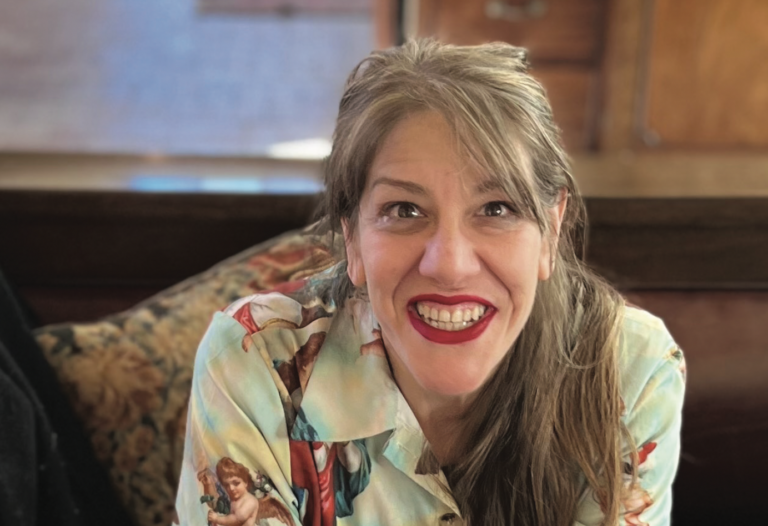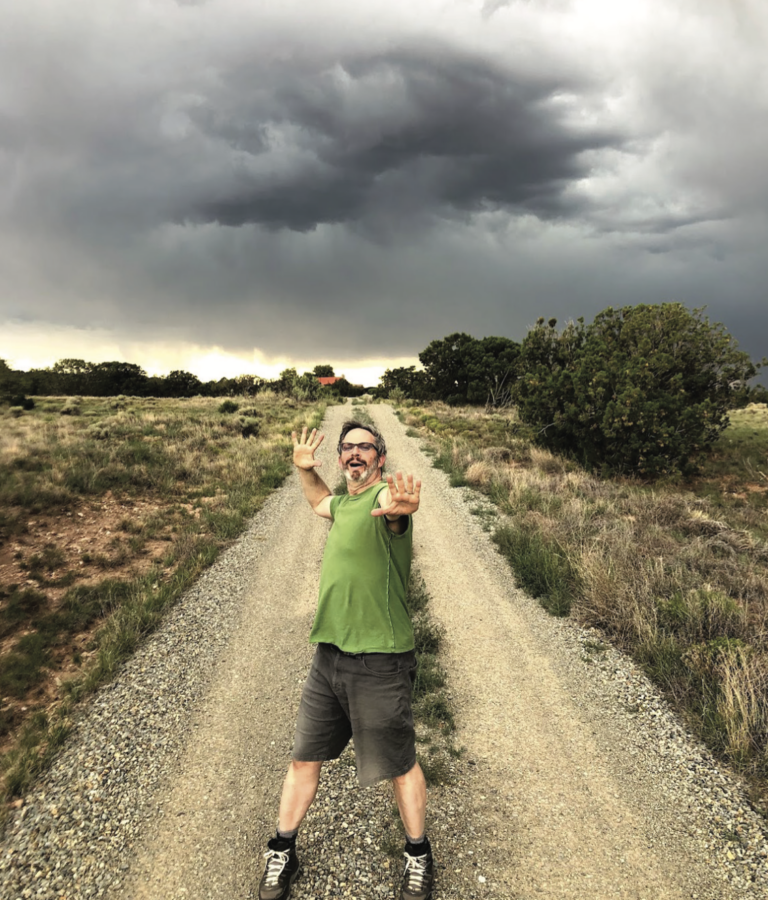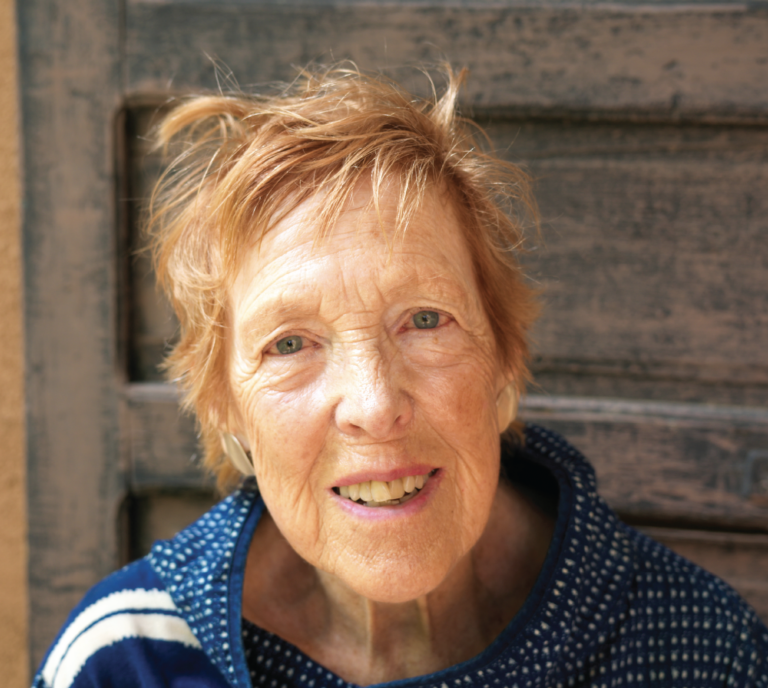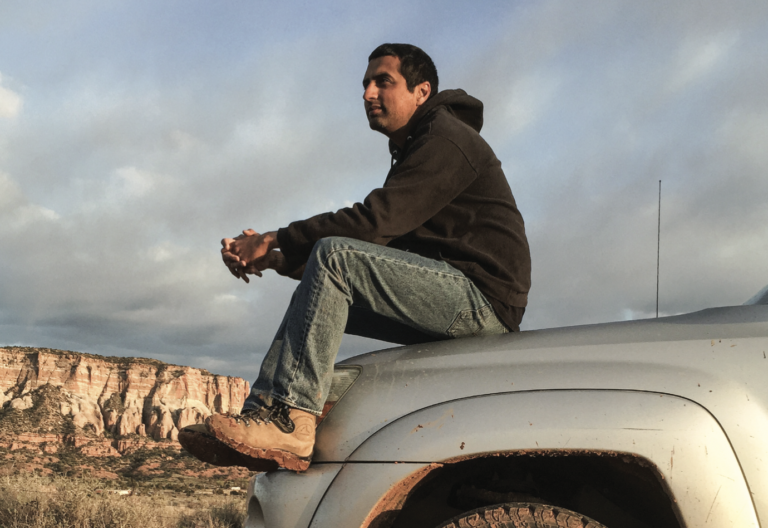THE BOISTEROUS, INCORRIGIBLE RASCAL; the teenage hell-raiser; founding member of the Bueno Boys. None of this is far from the surface in the adult Eric Enfield.
This is someone who seems to know just about everybody in Santa Fe. He is an architect by training and nature and is currently working on a project close to his heart – his own house.
He is also one of few individuals who, when they say they like people, mean it. At a party, I once saw him leave a group of friends and go over to a couple who looked isolated and sad in the inchoate way that sometimes happens when people get together. And though he had not met them before, he soon figured out who they might know and what intersection of lines they might have crossed. Suddenly, they were in the party.
When did you move to Santa Fe?
When I was a teenager, from Roswell. St. Mike’s was a dirt road. I-25 was just being built. That was good news for me and my friends since we could go there and do donuts on the construction site. We’d pour Clorox on the tires and go speed around. Sometimes we went four-wheeling up behind the St. John’s power lines. There was no road then. Just us four-wheeling along the power lines. And then we’d build large bonfires on the hills and have keggers up there. The fire would be visible to the whole city. The cops would come, but they wouldn’t walk up the hill. It wasn’t worth tracking us down.
Tell me about the Bueno Boys.
The Bueno Boys were eight guys in my high school class that were inseparable. Then we expanded to 19 with the Bueno Girls. The camaraderie was important. I still know a lot of them. I bump into them all the time.
Is is true that there is one degree of separation between you and nearly everybody in town?
I think the reason I know so many people is because I’ll walk up to anyone and talk to them, I really will. I always find some connection with people. I’ve found reasons to connect with others my whole life, actually.
What do you like about being an architect?
The tradition. Not just the adobe homes. Also the homes that were built in the ’20s and ’30s that are in the cottage style, the bungalow-style houses in Roswell and Artesia. I mean, there was a collision of cultures here. Every culture brought their own building materials.
I remember I worked construction one summer, and I started by making mud for adobe bricks. Then they asked me if I wanted to lay adobes rather than just make the mud the whole day. That’s for damn sure. I love laying adobes.
So this is what happens when all the materials collide in one place – you get Santa Fe. It’s a tactile thing, this mixture of materials. I’ve really been happy working here because I like the vernacular, and the human scale.
The three cultures – Hispanic, Native American, and white – have been melded together, and it’s created some monumental buildings, like the largest adobe structure is in Santa Fe, the National Park Service building.
There are like 250,000 adobe bricks in that building. It was a WPA project – that’s why there are hand-carved beams and the beautiful, Mexican Spanish detailing of the Pueblo style.
That was a success. What are some of the dumb, misguided things the city has done?
Start with the choice of Santa Fe as the capital. Albuquerque was right next door.
And, in the early 1930s, Santa Fe had its choice of the prison or the university. They chose the prison because they thought they’d have free labor from the prisoners. Can you imagine Santa Fe with the University of New Mexico here? But we chose the prison.
And now you’re an architect building your own house.
I was doing my best friend’s house in Tesuque, and he mentioned that the guy next door was selling his family farm that dated back to 1896. That was incredible for me because I’d grown up on land like that. My grandmother had a farm when I was a kid.
So I ended up buying this farm in Tesuque. It still has everything on it from 1896. Tools, Indigenous ruins, ancient stuff from 800 years ago.
The first owner was from Iowa, a gringo who homesteaded the property. Then it was transferred to a Hispanic family who built the core of the house, which is double adobe. Then, in 1930, it was sold back to a family in Iowa, and they hired an architect – the one thing architects can do is tell when someone drew something and thought about it. Someone drew this house and thought about it.
The inevitable collisions of Santa Fe architecture are manifesting in your house.
Building your own house is sort of like a therapist working on his own mind.
I’ve worked for so many other people – I’ve done probably a few thousand homes and commercial projects. And the toughest job was this little farm because we wanted to do it perfectly.
It’s not easy. Design intent is one thing, the ability to construct is another. The one way I’ve always sold my business is that I’ve done construction. I know how things get built. It’s like a puzzle that you put together. This house was that puzzle.
Interestingly, when they added on in 1930, they did some really special things that I haven’t seen very often. They literally furred the walls out in the living room to maintain the original adobe walls and added a mud plaster on the outside, right down to the initials of the guy who did the last coat of plaster on the wall.
When you’re providing a service for a client, there aren’t the personal effects that happen when you’re dealing with your spouse or your kids or whatever. But now we’re patting each other on the butt, going, Wow, this is looking really nice. We’re happy with what we did. Our farmhouse in Tesuque.
But, I will say, this is the last project I’m doing for myself.
Learn more at archallinc.com
Photo SFM








